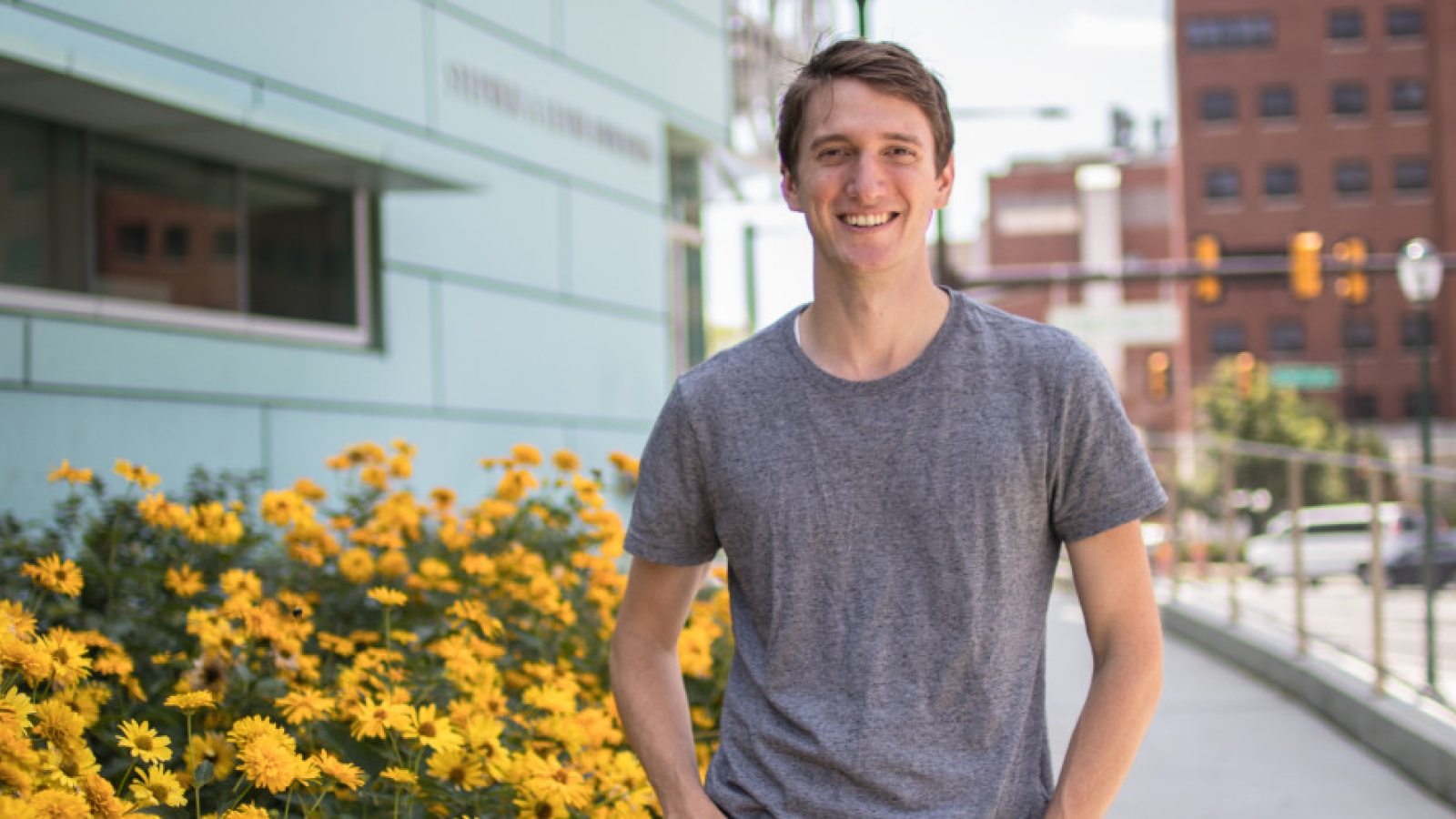It’s not often that you see a doctoral candidate in biology make his debut with a professional dance company, but that was a side effect of the quarantine for Ammon Perkes, GR’20.
Perkes spent the beginning of the quarantine like many, learning to negotiate the space of their home with his wife, Chloe, as they both adjusted to working remotely. Ammon worked on his thesis, which is analyzing the neural basis of how birds behave. As an essential worker, he did get to leave the house every few days to tend to the aviary on campus. Chloe, who is a dancer for the nationally-recognized Philadelphia company BalletX, stayed put and practiced wherever she could find space.
In the video 100 Days, released by BalletX, Chloe and Ammon represent life in quarantine, from waking up to one more day stuck at home to making yet another cup of coffee to trying to get work done with two people in close quarters. Chloe does most of the dancing, but Ammon does his bit at the end.
“We did a bunch of takes, and mostly it was just hanging out with Chloe,” says Ammon. “Which ended up being really sweet and candid and fun. I am not a dancer, but I do love my wife.”
Choreographer Caili Quan created the dance based on her experience with her own partner a few weeks into the quarantine. “I wanted to create a work that captured not only the angst and sadness that we all experienced, but also the simple joys in love, companionship and family during the ‘100 Days’ of dancing at home,” she says. “Chloe and Ammon have so much love in their relationship. I really wanted to share it with everyone.”
Quan says both Perkes were very involved with the choreography. As she communicated with Chloe over Zoom, “Ammon would naturally be on the couch working while we were running through that teacup dance, or he would come in when he was finished,” she says. “He totally learned all of Chloe's choreography on the couch!”
“It was like a fun date,” says Chloe. “Ammon doesn’t prefer to dance, but he has always danced with me when I really want him to. Caili would teach us the material and he was very fast picking it up and add his own wonderful Ammon moves, and I loved every second of it.”
Ammon’s day job involves a different kind of relationship: the courtship rituals of birds. His advisor is Marc Schmidt, Professor of Biology, whose research currently focuses on the part of the bird brain that controls its posture while courting. (“If you want to call it a dance, you can,” says Ammon.) They’re trying to learn how cowbirds produce the correct movements in order to find a mate.
When a female wants to mate, he explains, the male sings to her, and if she is interested she does a mating display. The researchers wanted to know how the female makes the decision to mate at that particular moment. They play the male’s song (you don’t need a real male; a recording will do) and record video to see how the females react to the specifics of the song. The better they like the song, the more likely they are to do the mating posture.
They are aided in their research by Penn’s new smart aviary, which Ammon helped to design. The enclosure has eight cameras and 24 microphones and is home to 20 brown-headed cowbirds. The aviary allows them to record not just one bird but the entire flock, so they can study social reactions and see how the flock works together. They use the cameras and microphones to collect data, then create algorithms to analyze it.
Ammon is also studying how the male birds choose which song to deploy. “They use different songs at different times, and we really don't know why,” he says. “How do they use different songs to signal different things to males and females, and establish their place in the social order?”
Birds are a good model for human social behavior. Like human babies, they learn their vocalizations from their parents, which Ammon says is fairly unique, and both have rich social lives. Cowbirds in the wild live in groups of thousands, with social relationships and social hierarchies.
Understanding how the birds interact will help us understand ourselves, says Ammon. “How humans survive is we make friends and we influence people. And it seems like for these birds that it's much more important how well they fit into their network rather than being the strongest bird.”
Through the quarantine, Ammon has been taking turns with his fellow researchers to go in and feed and care for the birds once a day. “It is funny,” he says. “I always think it's kind of sad to keep birds in cages, because normally these cowbirds will live over an area of two miles. But they don’t seem to mind. They seem content. And now I’m in my house all the time.”
As the quarantine eased somewhat, he was able to continue his research at the aviary. Chloe and other dancers are joining musicians for socially-distanced performances, most recently in Rittenhouse Park to a solo tuba. (“It was really cool. I’ve never danced with a lone tuba before.”) When the quarantine was imposed in March, BalletX was just about to start its spring performances. “I was so looking forward to the performances, and I went through a time of mourning,” she says. “But then it’s been an amazing time to be with my husband. Despite the sadness, that’s been a wonderful part of this.”



